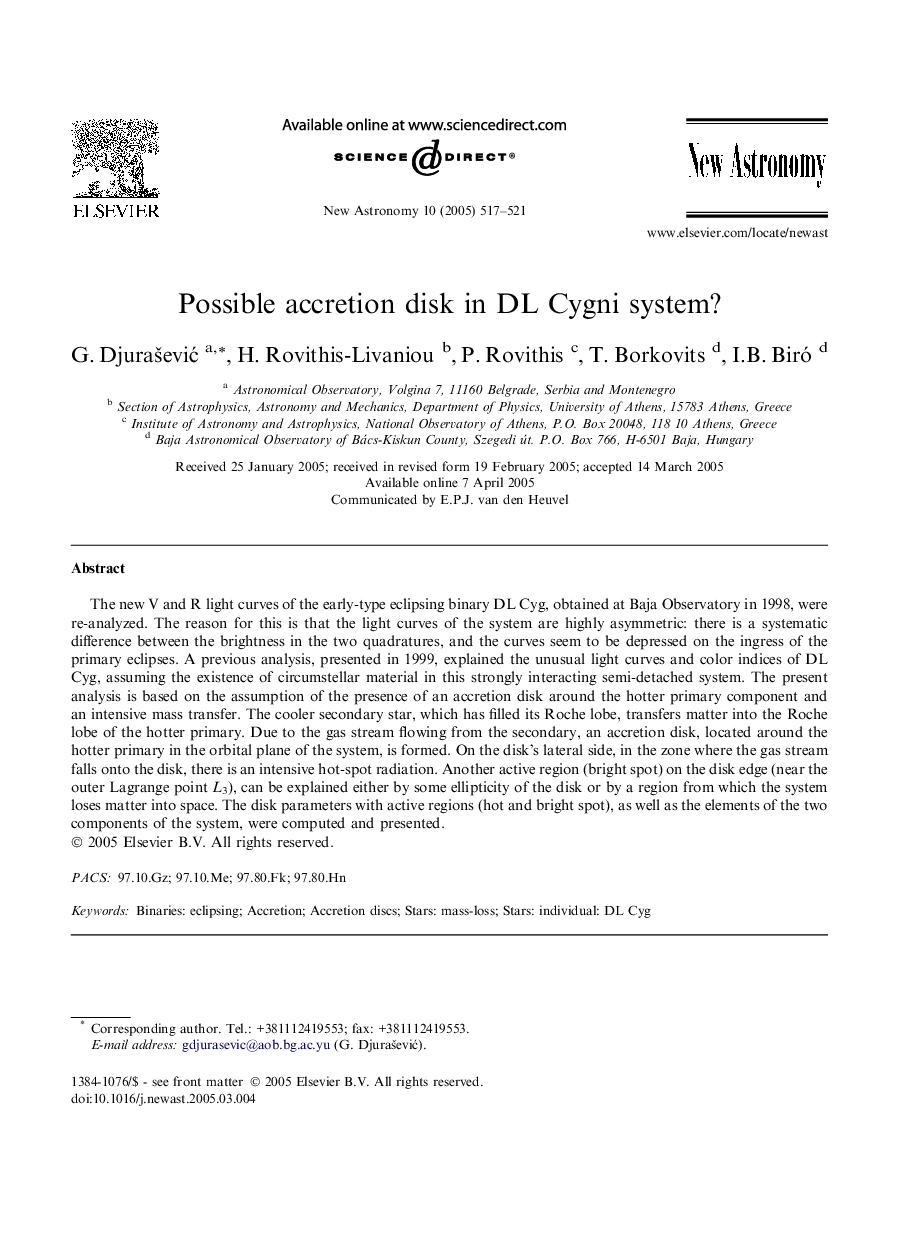| Article ID | Journal | Published Year | Pages | File Type |
|---|---|---|---|---|
| 10704727 | New Astronomy | 2005 | 5 Pages |
Abstract
The new V and R light curves of the early-type eclipsing binary DL Cyg, obtained at Baja Observatory in 1998, were re-analyzed. The reason for this is that the light curves of the system are highly asymmetric: there is a systematic difference between the brightness in the two quadratures, and the curves seem to be depressed on the ingress of the primary eclipses. A previous analysis, presented in 1999, explained the unusual light curves and color indices of DL Cyg, assuming the existence of circumstellar material in this strongly interacting semi-detached system. The present analysis is based on the assumption of the presence of an accretion disk around the hotter primary component and an intensive mass transfer. The cooler secondary star, which has filled its Roche lobe, transfers matter into the Roche lobe of the hotter primary. Due to the gas stream flowing from the secondary, an accretion disk, located around the hotter primary in the orbital plane of the system, is formed. On the disk's lateral side, in the zone where the gas stream falls onto the disk, there is an intensive hot-spot radiation. Another active region (bright spot) on the disk edge (near the outer Lagrange point L3), can be explained either by some ellipticity of the disk or by a region from which the system loses matter into space. The disk parameters with active regions (hot and bright spot), as well as the elements of the two components of the system, were computed and presented.
Keywords
Related Topics
Physical Sciences and Engineering
Physics and Astronomy
Astronomy and Astrophysics
Authors
G. DjuraÅ¡eviÄ, H. Rovithis-Livaniou, P. Rovithis, T. Borkovits, I.B. Biró,
